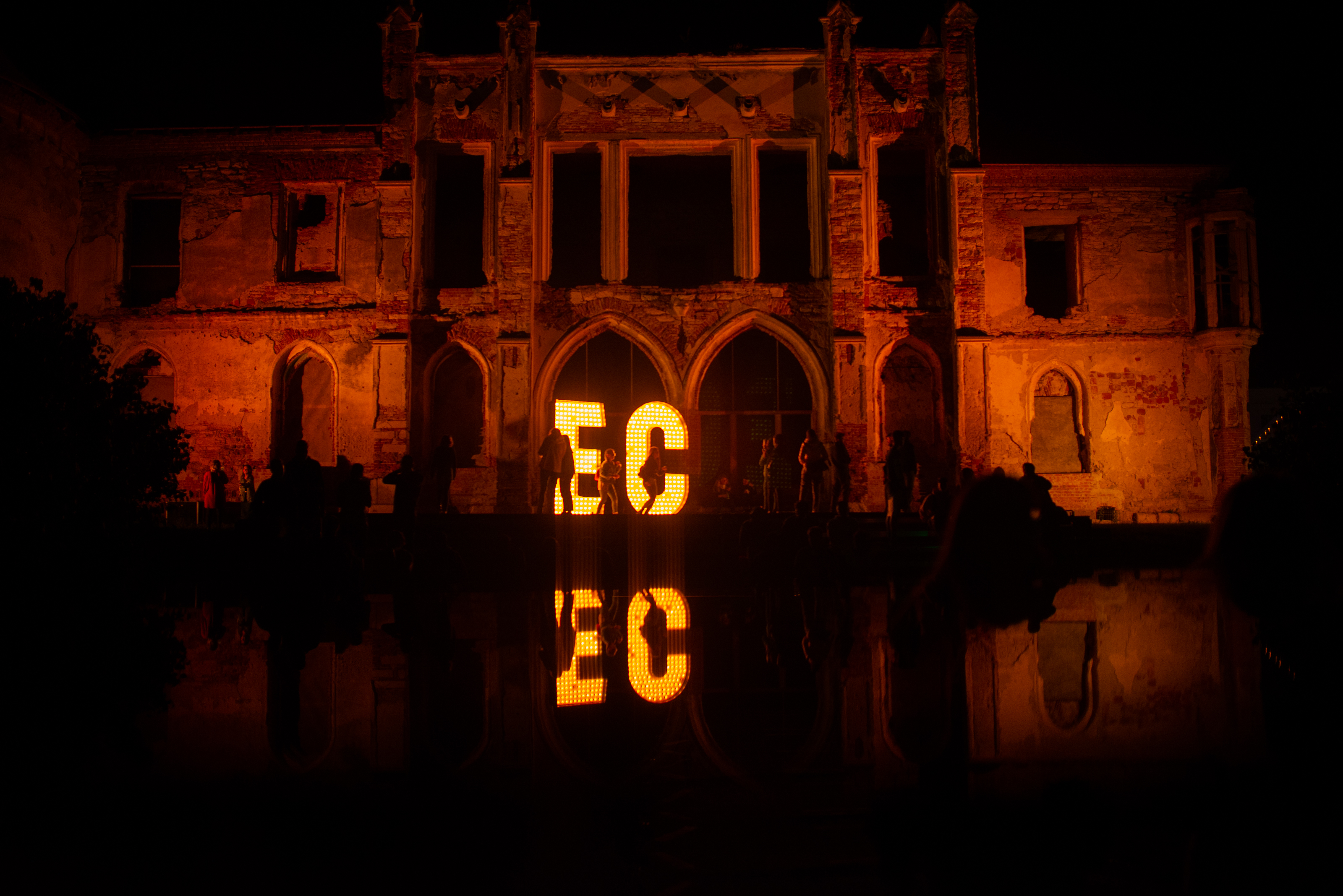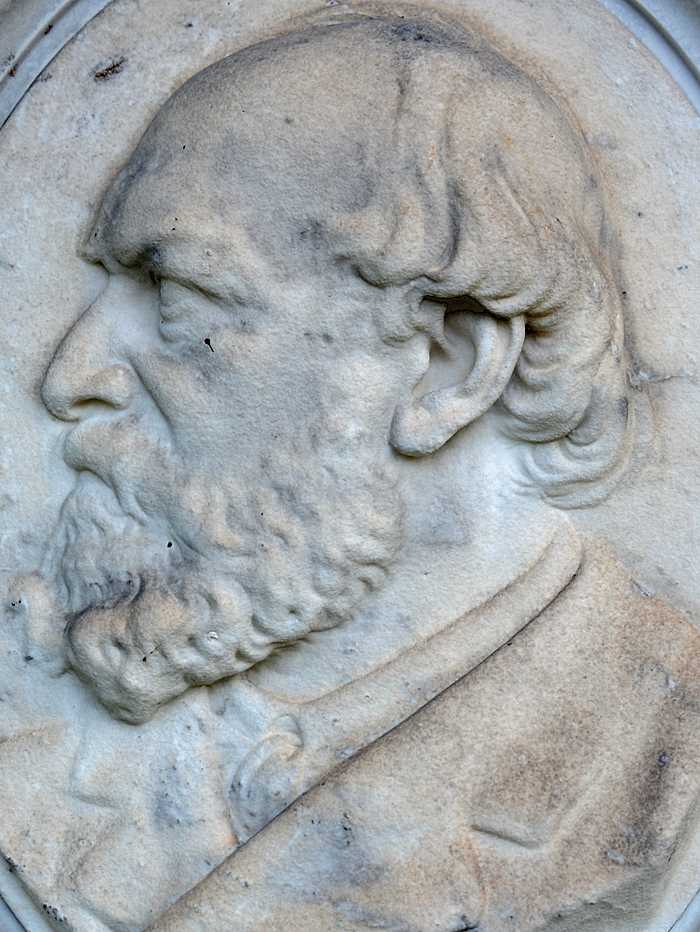|
Bonțida Bánffy Castle
Bánffy Castle is an architectural monument situated in Bonţida, a village in the vicinity of Cluj-Napoca, Romania, with construction phases and stylistic features belonging to Renaissance, Baroque, Neoclassical and Neogothic styles. It is owned by the Hungarian Bánffy family (of which Miklós Bánffy was a member). The current owner is Katalin Bánffy. History In 1387, the Bonțida estate came into the possession of the Hungarian Bánffy of Losonc family, when Sigismund of Luxemburg donated it to Dénes, son of Tamás Losonci. The present castle was preceded by a manor house, whose history dates back to the 15th-16th centuries. After 1640, the estate was inherited by Dénes Bánffy (II) (1638–1674), county governor of Doboka and Kolozs counties, brother-in-law and counselor of Prince Michael I Apafi, who fortified the initial building between 1668 and 1674 by surrounding it with curtain walls that formed a rectangular enclosure, reinforced at the corners with massive ci ... [...More Info...] [...Related Items...] OR: [Wikipedia] [Google] [Baidu] |
Electric Castle
Electric Castle is an annual music festival held on the Transylvanian domain of the Bánffy Castle, near Cluj-Napoca in Romania, and combines music, technology and alternative arts. It features many genres of music including rock, indie, hip hop, electronic, techno, and drum and bass as well as art installations. In the seventh edition, the festival has received the award for the Best Medium Sized Festival at the European Festival Awards, where Electric Castle has been nominated since its existence. On its past editions, the festival had confirmed names such as Florence + the Machine, Thirty Seconds to Mars, The Prodigy, Nils Frahm, Skrillex, Bring me the Horizon, Deadmau5, alt-J, Franz Ferdinand, Fatboy Slim, Sigur Ros, Bastille, Rudimental, Thievery Corporation, Die Antwoord, Twenty One Pilots, Gorillaz and many other artists that performed on one of its ten stages. History EC 1 - 2013 The first edition of Electric Castle Festival took place from June 21 to 23. M ... [...More Info...] [...Related Items...] OR: [Wikipedia] [Google] [Baidu] |
Michael I Apafi
Michael Apafi ( hu, Apafi Mihály; 3 November 1632 – 15 April 1690) was Prince of Transylvania from 1661 to his death. Background The Principality of Transylvania emerged after the disintegration of the medieval Kingdom of Hungary in the second half of the 16th century. The principality included Transylvania proper and other territories to the east of the river Tisza, known as Partium. The princes of Transylvania paid a yearly tribute to the Ottoman sultans and could not conduct an independent foreign policy. They also maintained a special relationship with the Habsburg rulers of Royal Hungary (the realm developing on the northern and western territories of medieval Hungary), theoretically acknowledging that their principality remained a land of the Holy Crown of Hungary. Early life Born in Ebesfalva (now Dumbrăveni in Romania) on 3 November 1632, Michael was the son of György Apafi of Apanagyfalva and Borbála Petky. György Apafi was the ''ispán'' (or head) of Kük ... [...More Info...] [...Related Items...] OR: [Wikipedia] [Google] [Baidu] |
The Austro-Hungarian Monarchy In Word And Picture
''The Austro-Hungarian Monarchy in Word and Picture'' or the ''Kronprinzenwerk'' ("Crown Prince's Work") is a 24-volume encyclopedia of regional studies, initiated in 1883 by Crown Prince Rudolf of Austria-Hungary. The encyclopedia describes countries, peoples, landscapes and regions of the Austro-Hungarian Crown Lands. It was also published in a 21-volume Hungarian edition ("Az Osztrák-Magyar Monarchia írásban és képben"). The German edition was edited by the history and geography professor, Josef Weil von Weilen (1830-1889), while the Hungarian edition was edited by the novelist and dramatist Mór Jókai. Only the German edition was financially successful. The Hungarian edition includes some anti-Semitic remarks that are missing from the German edition. The volumes were issued from December 1885 through June 1902 in 398 installments, from the "" (Court and State Printers) and , a publisher and bookseller. They contain 587 contributions, totaling 12,596 pages with 4,529 ... [...More Info...] [...Related Items...] OR: [Wikipedia] [Google] [Baidu] |
Princess Margareta Of Romania
Margareta, Custodian of the Crown of Romania (; born 26 March 1949) is the eldest daughter of King Michael I and Queen Anne of Romania. She assumed her father's duties in March 2016, upon his retirement, and has claimed the headship of the House of Romania since his death on 5 December 2017. She also heads the Margareta of Romania Royal Foundation. Until 2011, Margareta also used the style of a princess of Hohenzollern.Montgomery-Massingberd, Hugh (editor). ''Burke's Guide to the Royal Family'', Burke's Peerage, London, 1973, p. 279. de Badts de Cugnac, Chantal. Coutant de Saisseval, Guy. ''Le Petit Gotha''. Nouvelle Imprimerie Laballery, Paris 2002, p. 769 (French) Margareta has four sisters and no brothers or children. Her heir-presumptive is her next sister, Princess Elena of Romania. According to the defunct royal constitutions of 1923 and 1938, women were barred from wearing the crown, and Margareta and her sisters would not be in the line of succession to the throne. On ... [...More Info...] [...Related Items...] OR: [Wikipedia] [Google] [Baidu] |
Charles, Prince Of Wales
Charles III (Charles Philip Arthur George; born 14 November 1948) is King of the United Kingdom and the 14 other Commonwealth realms. He was the longest-serving heir apparent and Prince of Wales and, at age 73, became the oldest person to accede to the British throne following the death of his mother, Elizabeth II, on 8 September 2022. Charles was born in Buckingham Palace during the reign of his maternal grandfather, King George VI, and was three when his mother ascended the throne in 1952, making him the heir apparent. He was made Prince of Wales in 1958 and his investiture was held in 1969. He was educated at Cheam and Gordonstoun schools, as was his father, Prince Philip, Duke of Edinburgh. Charles later spent six months at the Timbertop campus of Geelong Grammar School in Victoria, Australia. After earning a Bachelor of Arts degree from the University of Cambridge, Charles served in the Air Force and Navy from 1971 to 1976. In 1981, he married Lady Diana Spencer, ... [...More Info...] [...Related Items...] OR: [Wikipedia] [Google] [Baidu] |
Liviu Ciulei
Liviu Ciulei (; 7 July 1923 – 24 October 2011) was a Romanian theater and film director, film writer, actor, architect, educator, costume and set designer. During a career spanning over 50 years, he was described by ''Newsweek'' as "one of the boldest and most challenging figures on the international scene".''Theater History'' at the Guthrie Theater site Ciulei is known for winning the Best Director Award at the 1965 Cannes Film Festival for his film '' |
Romanticism
Romanticism (also known as the Romantic movement or Romantic era) was an artistic, literary, musical, and intellectual movement that originated in Europe towards the end of the 18th century, and in most areas was at its peak in the approximate period from 1800 to 1850. Romanticism was characterized by its emphasis on emotion and individualism, clandestine literature, paganism, idealization of nature, suspicion of science and industrialization, and glorification of the past with a strong preference for the medieval rather than the classical. It was partly a reaction to the Industrial Revolution, the social and political norms of the Age of Enlightenment, and the scientific rationalization of nature. It was embodied most strongly in the visual arts, music, and literature, but had a major impact on historiography, education, chess, social sciences, and the natural sciences. It had a significant and complex effect on politics, with romantic thinkers influencing conservatism, libe ... [...More Info...] [...Related Items...] OR: [Wikipedia] [Google] [Baidu] |
Water Mill
A watermill or water mill is a mill that uses hydropower. It is a structure that uses a water wheel or water turbine to drive a mechanical process such as milling (grinding), rolling, or hammering. Such processes are needed in the production of many material goods, including flour, lumber, paper, textiles, and many metal products. These watermills may comprise gristmills, sawmills, paper mills, textile mills, hammermills, trip hammering mills, rolling mills, wire drawing mills. One major way to classify watermills is by wheel orientation (vertical or horizontal), one powered by a vertical waterwheel through a gear mechanism, and the other equipped with a horizontal waterwheel without such a mechanism. The former type can be further divided, depending on where the water hits the wheel paddles, into undershot, overshot, breastshot and pitchback (backshot or reverse shot) waterwheel mills. Another way to classify water mills is by an essential trait about their location: tide mill ... [...More Info...] [...Related Items...] OR: [Wikipedia] [Google] [Baidu] |
Ovid
Pūblius Ovidius Nāsō (; 20 March 43 BC – 17/18 AD), known in English as Ovid ( ), was a Roman poet who lived during the reign of Augustus. He was a contemporary of the older Virgil and Horace, with whom he is often ranked as one of the three canonical poets of Latin literature. The Imperial scholar Quintilian considered him the last of the Latin love elegists.Quint. ''Inst.'' 10.1.93 Although Ovid enjoyed enormous popularity during his lifetime, the emperor Augustus banished him to Tomis, a Dacian province on the Black Sea, where he remained a decade until his death. Overview A contemporary of the older poets Virgil and Horace, Ovid was the first major Roman poet to begin his career during Augustus's reign. Collectively, they are considered the three canonical poets of Latin literature. The Imperial scholar Quintilian described Ovid as the last of the Latin love elegists.Quint. ''Inst.'' 10.1.93 He enjoyed enormous popularity during his lifetime, but the emperor Augus ... [...More Info...] [...Related Items...] OR: [Wikipedia] [Google] [Baidu] |
Someș (river)
The Someș (; hu, Szamos; german: Somesch or ''Samosch'') is a left tributary of the Tisza in Hungary and Romania. It has a length of (including its source river Someșul Mare), of which 50 km are in Hungary.Analysis of the Tisza River Basin 2007 International Commission for the Protection of the Danube River, IPCDR The Someș is the fifth largest river by length and volume in Romania. The hydrographic basin forms by the confluence at Mica, Cluj, Mica, a commune about 4 km upstream of Dej, of Someșul Mare and Someșul Mic rivers. Someșul Mic (formed by the confluence of Someșul Rece with Someșul Cald) originates in the Apuseni Mountains, and Someșul Mare springs from the Rodna Mountains. Someșul Mare has a length of 130 km and an area of 5,033 km2 ... [...More Info...] [...Related Items...] OR: [Wikipedia] [Google] [Baidu] |
Cour D'honneur
A ''cour d'honneur'' (; ; german: Ehrenhof) is the principal and formal approach and forecourt of a large building. It is usually defined by two secondary wings projecting forward from the main central block (''corps de logis''), sometimes with a fourth side, consisting of a low wing or a railing. The Palace of Versailles (''illustration'') and Blenheim Palace (''plan'') both feature such entrance courts. Definition Technically, the term ''cour d'honneur'' can be used of any large building whether public or residential, ancient or modern, which has a symmetrical courtyard laid out in this way. History Some 16th-century symmetrical Western European country houses built on U-shaped groundplans resulted in a sheltered central door in a main range that was embraced between projecting wings, but the formalized ''cour d'honneur'' is first found in the great palaces and mansions of 17th-century Europe, where it forms the principal approach and ceremonial entrance to the building. I ... [...More Info...] [...Related Items...] OR: [Wikipedia] [Google] [Baidu] |







